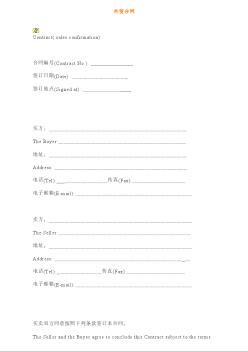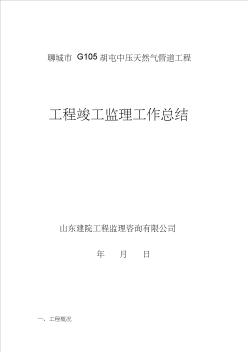Contents
Chapterl Introduction 1
1.1 A Brief History of Natural Gas Exploitation 1
1.2 Prospects of Natural Gas Development 5
1.2.2 Construction of natural gas pipeline system-foundation for gas market development 7
1.2.3 A series of auxiliary technology for natural gas exploitation 9
1.3 Characteristics of the Course and Tips for Learning 10
References 11
Chapter 2 Properties of Natural Gases 13
2.1 Fundamental Concepts and Principles 13
2.1.1 Definitions of natural gas 13
2.1.2 Composition of natural gas 13
2.1.3 Ideal-gaslaw 14
2.1.4 Behavior of real gases 16
2.1.5 Principle of corresponding states 16
2.2 Apparent Molecular Weight and Specific Gravity of a Gas Mixture 17
2.2.1 Apparent molecular weight of a gas mixture 17
2.2.2 Density of natural gas 18
2.2.3 Relative density of naturalgas 18
2.3 Calculation of Pseudo-critical Gas Properties 20
2.3.1 Calculation of the pseudo-critical properties with mixing rules 20
2.3.2 Calculation of the pseudo-critical properties with Sutton's correlations 27
2.3.3 Correcting pseudo-critical properties for H2S and C02 contamination 31
2.3.4 Calculation of specific gravity of reservoir gas 34
2.4 Calculation of Z Factor 35
2.4.1 Definition of Z Factor 35
2.4.2 Determination Z factor from standing-Katz nomograph 35
2.4.3 Correlations for Z factor 37
2.5 Gas Formation Volume Factor 39
2.6 Gas Viscosity 40
2.6.1 Definition of gas viscosity 40
2.6.2 Calculation of gas viscosity 41
2.7 Water Dew Point and Hydrocarbon Dew Point of Gas 45
2.7.1 Saturated water content in gas 45
2.7.2 Water dew point of gas 48
2.7.3 Hydrocrbon dew point of gas 48
2.8 Isothermal Compressibility Coefficient of Gas 48
2.8.1 Definition of isothermal compressibility coefficient 48
2.8.2 Calculation of isothermal compressibility coefficient 49
2.9 Properties of Formation Water 53
2.9.1 Water FVF 53
2.9.2 Solution gas/water ratio 54
2.9.3 Compressibility of water 56
2.10 PV Compressibility Correlations 58
References 59
Chapter 3 Gas Reservoir Material Balance,Reserve Calculation and Recovery 61
3.1 Volumetric Method 61
3.1.1 Volumetric dry gas reservoir 62
3.1.2 Dry gas reservoirs with water influx 64
3.1.3 Wet gas and gas-condensate reservoirs 67
3.2 MaterialBalance Method 71
3.2.1 Volumetric dry gas reservoirs material balance 72
3.2.2 Dry gas reservoirs with water influx 74
3.2 3 Volumetric geopressured gas reservoir 96
3.2.4 Volumetric gas-condensate reservoirs 104
3.3 Gas Reservoir Recovery 110
3.3.1 Analogy 112
3.3.2 Calculation 115
References 129
Chapter 4 Analysis and Design of Gas Well Deliverability 131
4.1 Gas Deliverability Equation Under Steady-state Flow Condition 131
4.1.1 Darcy's law under steady-state flow condition 131
4.1.2 Non-Darrcy's production equation 136
4.2 Gas Well Deliverability Equation of Pseudosteady State Flow 139
4.3 Empirical Deliverability Test Technique 147
4.4 Gas Well Deliverability Test Technique 147
4.4.1 Well test design 148
4.4.2 Well test method 151
4.5 Influence of Different Completion Methods for Inflow Performance 156
4.5.1 0pen hole completion 157
4.5.2 Perforated completion 159
4.5.3 Gravel packer completion 164
4.6 Design and Implementation of Gas-well Deliverability Tests 171
4.6.1 Well test purposes 171
4.6.2 General test design considerations 173
4.6.3 Pretest estimates of reservoir properties 177
4.6.4 Stabiliztion time 182
4 6.5 Estimation of deliverability test duration 183
4.6.6 Flow-rate requirements 184
4.6.7 General deliverability test design procedures 188
Exercise 192
References 192
Chapter 5 Decline Curve Analysis for Gas Wells 194
5.1 Arps Production Decline Analysis 194
5.1.1 Decline velocity,decline rate and decline law 194
5.1.2 Exponentialdecline 197
5.1.3 Harmonic decline 198
5.1.4 Hyerbolic decline 199
5.2 Modern Production Decline Analysis 206
References 239
Chapter 6 Calculation of Pipe Flow and Choke Flow 240
6.1 Systems,Heat,Work,and Energy 240
6.1.1 System 241
6.1.2 Heat 242
6.1.3 Work 242
6.1.4 Energy 243
6.2 First Law of Thermodynamics 244
6.2.1 Closed system 245
6.2.2 0pen system 246
6.3 Energy Conservation Equation 248
6.4 Friction Calculation 250
6.4.1 Darcy resistance Formula 250
6.4.2 Friction factor 250
6.5 Bernoulli's Equation 253
6.6 Bottom Hole Pressure Calculations of Lean Gas Wells 253
6.6.1 Calculation of static bottom hole pressure 254
6.6.2 Flowing bottom hole pressure 263
6.6.3 Horizontal gas pipe pressure drop 268
6.6.4 Condensate gas modification 268
6.7 Modification of the Flowing Bottom Hole Pressure with Liquid Phase 269
6.7.1 Characteristic parameters of two-phase flow in pipes 270
6.7.3 Basic equation and solving steps 276
6.7.4 Hagedorn-Brown method of calculation on two-p 2100433B

 英文版外贸合同(中英文对照版)
英文版外贸合同(中英文对照版)

